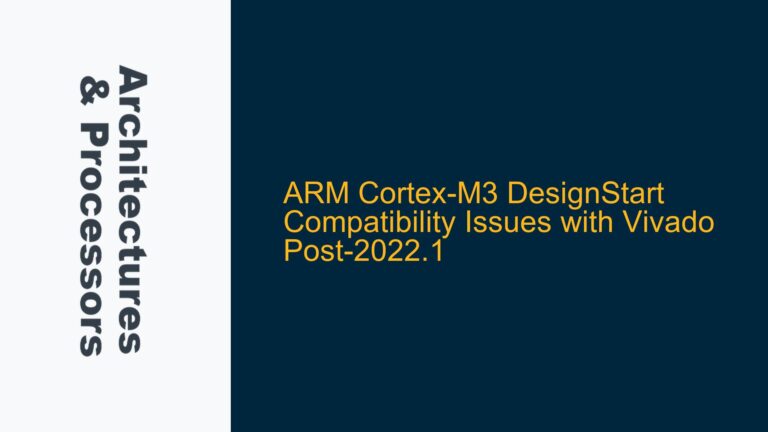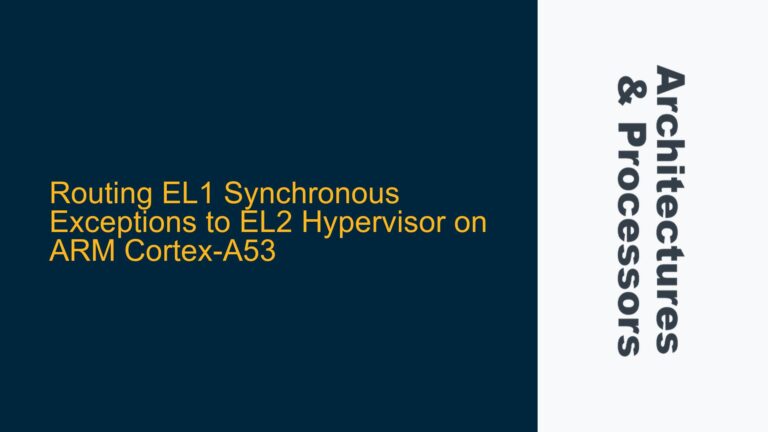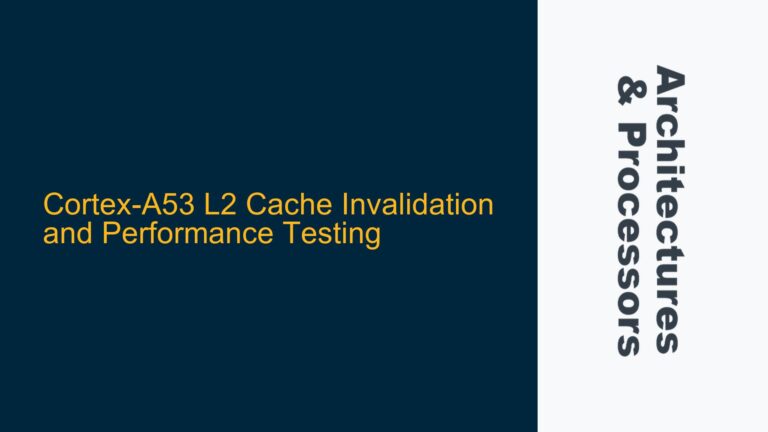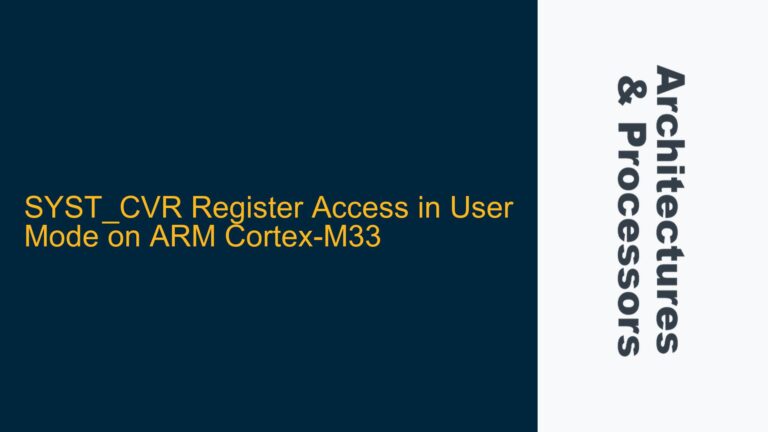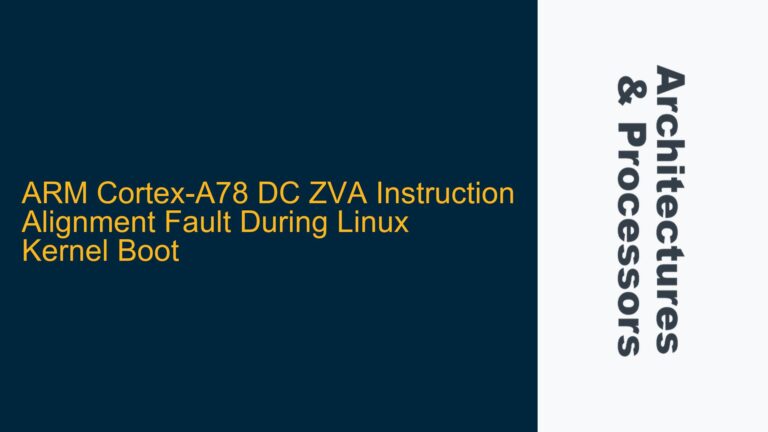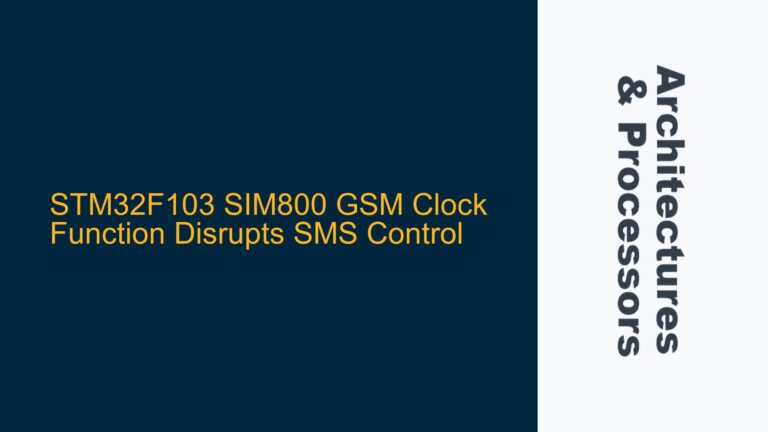Understanding AXI FIXED Mode Transactions and FIFO Interactions
The Advanced eXtensible Interface (AXI) protocol is widely used in ARM-based systems for high-performance on-chip communication. One of its burst types, FIXED mode, is particularly useful for accessing FIFO (First-In-First-Out) buffers, where the same address is used for multiple data transfers. However, the interaction between AXI FIXED mode transactions and FIFO buffers can lead to confusion, especially when dealing with mismatched data bus widths or multiple writes to the same address. This post delves into the legalities of AWSIZE (transfer size) in AXI FIXED mode, the behavior of FIFO buffers during such transactions, and how to handle potential pitfalls.
When using AXI FIXED mode, the master specifies a fixed address for all transfers in the burst. This is ideal for FIFO implementations, as the FIFO typically operates on a single address. However, the combination of AWSIZE (which defines the size of each transfer in the burst) and the FIFO’s data bus width can lead to unexpected behavior. For instance, if the AWSIZE is set to 64 bits but the FIFO’s data bus width is only 32 bits, the system must handle the mismatch appropriately. Additionally, the behavior of FIFO buffers during multiple writes to the same address must be carefully considered to avoid data corruption or loss.
Legal AWSIZE Values and FIFO Data Handling in AXI FIXED Mode
The AXI protocol allows for a wide range of AWSIZE values, but not all of them are practical or legal when interfacing with a FIFO buffer. AWSIZE defines the number of bytes transferred in each beat of a burst. For example, an AWSIZE of 2 indicates a 4-byte (32-bit) transfer, while an AWSIZE of 3 indicates an 8-byte (64-bit) transfer. When the AWSIZE exceeds the FIFO’s data bus width, the system must handle the mismatch gracefully.
In the case of a 32-bit FIFO, an AWSIZE of 64 bits is technically legal but requires special handling. The AXI protocol does not inherently prevent a master from requesting a 64-bit transfer to a 32-bit slave. However, the system must include a downsizing bridge or similar logic to convert the 64-bit transfer into two 32-bit transfers. This downsizing logic ensures that the FIFO receives data in a format it can handle.
The behavior of the FIFO during such transactions depends on the implementation of the downsizing logic. If the FIFO is designed to accept only 32-bit writes, the downsizing logic must split the 64-bit transfer into two 32-bit writes. The first write would contain the lower 32 bits of the 64-bit data, and the second write would contain the upper 32 bits. However, since the FIFO operates on a single address, both writes would target the same location. This raises the question of whether the second write overwrites the first or if the FIFO handles the writes sequentially.
In most FIFO implementations, multiple writes to the same address are handled sequentially, with each write pushing a new entry into the FIFO. This means that the lower 32 bits would be written first, followed by the upper 32 bits, resulting in two separate entries in the FIFO. However, if the FIFO is designed to overwrite the same location, the second write would overwrite the first, leading to data loss. Therefore, it is crucial to understand the specific behavior of the FIFO being used and ensure that the downsizing logic aligns with this behavior.
Addressing AWLEN and AWSIZE Mismatches in FIFO Operations
Another critical aspect of AXI FIXED mode transactions is the interaction between AWLEN (burst length) and AWSIZE. AWLEN defines the number of transfers in a burst, while AWSIZE defines the size of each transfer. When AWLEN is greater than 0 and AWSIZE is less than or equal to 2 (indicating 32-bit transfers), the behavior of the FIFO must be carefully considered.
In a typical FIFO implementation, each write operation pushes a new entry into the buffer, regardless of the address. This means that even if multiple writes target the same address, each write results in a new entry in the FIFO. However, if the FIFO is designed to overwrite the same location, multiple writes would result in only the last write being retained. This behavior is generally undesirable in FIFO implementations, as it defeats the purpose of a buffer that stores multiple entries.
To avoid confusion, it is essential to ensure that the FIFO is configured to handle multiple writes correctly. This typically involves setting the FIFO to operate in a mode where each write results in a new entry, regardless of the address. Additionally, the AXI master should be configured to use an appropriate AWSIZE that matches the FIFO’s data bus width. For example, if the FIFO has a 32-bit data bus, the AWSIZE should be set to 2 (indicating 32-bit transfers) to avoid the need for downsizing logic.
Best Practices for AXI FIXED Mode Transactions with FIFO Buffers
To ensure reliable operation when using AXI FIXED mode with FIFO buffers, follow these best practices:
-
Match AWSIZE to FIFO Data Bus Width: Always set the AWSIZE to match the FIFO’s data bus width. For a 32-bit FIFO, use an AWSIZE of 2 (32 bits). This eliminates the need for downsizing logic and ensures that each transfer aligns with the FIFO’s capabilities.
-
Understand FIFO Behavior: Carefully review the FIFO’s documentation to understand how it handles multiple writes to the same address. Ensure that the FIFO is configured to push new entries for each write, rather than overwriting the same location.
-
Use Appropriate AWLEN Values: Set AWLEN to the desired number of transfers in the burst. Remember that each transfer results in a new entry in the FIFO, so AWLEN should be chosen based on the number of entries you want to write or read.
-
Implement Downsizing Logic if Necessary: If the AXI master must use an AWSIZE larger than the FIFO’s data bus width, implement downsizing logic to split the transfers into smaller chunks. Ensure that this logic aligns with the FIFO’s behavior and does not result in data loss or corruption.
-
Verify System Behavior: Thoroughly test the system to verify that the AXI FIXED mode transactions and FIFO interactions work as expected. Use simulation and debugging tools to identify and resolve any issues.
By following these best practices, you can ensure that your AXI FIXED mode transactions interact correctly with FIFO buffers, avoiding data loss, corruption, and other potential issues. Understanding the legalities of AWSIZE, the behavior of FIFO buffers, and the interaction between AWLEN and AWSIZE is key to implementing reliable and efficient systems.

